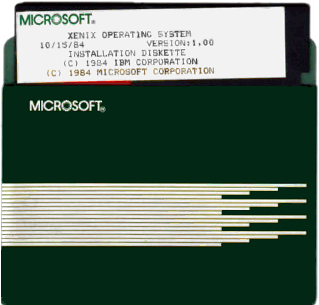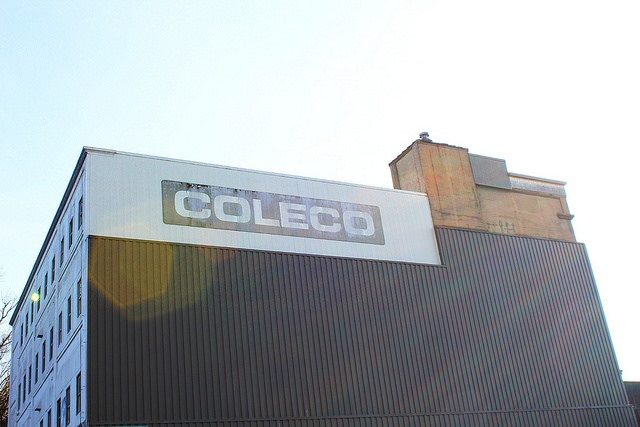|
Vaporware
In the computer industry, vaporware (or vapourware) is a product, typically computer hardware or software, that is announced to the general public but is late or never actually manufactured nor officially cancelled. Use of the word has broadened to include products such as automobiles. Vaporware is often announced months or years before its purported release, with few details about its development being released. Developers have been accused of intentionally promoting vaporware to keep customers from switching to competing products that offer more features. ''Network World'' magazine called vaporware an "epidemic" in 1989 and blamed the press for not investigating if developers' claims were true. Seven major companies issued a report in 1990 saying that they felt vaporware had hurt the industry's credibility. The United States accused several companies of announcing vaporware early enough to violate antitrust laws, but few have been found guilty. "Vaporware" was coined by a ... [...More Info...] [...Related Items...] OR: [Wikipedia] [Google] [Baidu] |
Ovation Technologies
Ovation Technologies was a short-lived software company founded in Canton, Massachusetts, in December 1982 to create business productivity software for the then-emerging IBM PC and compatible market. Briefly named Spectrum Group Inc., the company was founded by Thomas J. Gregory, who also served as the company's president. Mike Walrod served as vice president of marketing. Their intended product, also named "Ovation", was an integrated software suite aiming to compete against the industry leader at the time, Lotus 1-2-3. The company raised several million in capital and secured a distribution agreement with Tandy Corporation, including co-marketing with their line of Tandy 2000 computers. The "Ovation" project was led by chief software designer Robert Kutnik. The company made impressive demonstrations, culminating with a high-profile news conference staged at Manhattan's Windows on the World restaurant, but ultimately they were unable to ship their product, and filed for bankrup ... [...More Info...] [...Related Items...] OR: [Wikipedia] [Google] [Baidu] |
Xenix
Xenix is a discontinued version of the Unix operating system for various microcomputer platforms, licensed by Microsoft from AT&T Corporation in the late 1970s. The Santa Cruz Operation (SCO) later acquired exclusive rights to the software, and eventually replaced it with SCO UNIX (now known as SCO OpenServer). In the mid-to-late 1980s, Xenix was the most common Unix variant, measured according to the number of machines on which it was installed. Microsoft chairman Bill Gates said at Unix Expo in 1996 that, for a long time, Microsoft had the highest-volume AT&T Unix license. History Bell Labs, the developer of Unix, was part of the regulated Bell System and could not sell Unix directly to most end users (academic and research institutions excepted); it could, however, license it to software vendors who would then resell it to end users (or their own resellers), combined with their own added features. Microsoft, which expected that Unix would be its operating system of the futu ... [...More Info...] [...Related Items...] OR: [Wikipedia] [Google] [Baidu] |
360-91-panel '', 2001
{{Numberdis ...
36 may refer to: * 36 (number), the natural number following 35 and preceding 37 * One of these years of Gregorian or Julian calendars: ** 36 BC, 1st century BCE ** AD 36, 1st century ** 1936, 20th century ** 2036, 21st century Arts and entertainment * ''36'' (TV series), an American sports documentary show * "36", a 2002 song by System of a Down from ''Steal This Album!'' * 36 Quai des Orfèvres (film), a 2004 French crime film * "Thirty Six", a song by Karma to Burn from the album ''Almost Heathen ''Almost Heathen'' is the third studio album by the stoner rock band Karma to Burn, released in 2001 via Spitfire Records. It was the last album released before their seven-year disbandment in 2002. The album was reissued in 2022 by Heavy Psych So ... [...More Info...] [...Related Items...] OR: [Wikipedia] [Google] [Baidu] |
Operating System
An operating system (OS) is system software that manages computer hardware, software resources, and provides common services for computer programs. Time-sharing operating systems schedule tasks for efficient use of the system and may also include accounting software for cost allocation of processor time, mass storage, printing, and other resources. For hardware functions such as input and output and memory allocation, the operating system acts as an intermediary between programs and the computer hardware, although the application code is usually executed directly by the hardware and frequently makes system calls to an OS function or is interrupted by it. Operating systems are found on many devices that contain a computer from cellular phones and video game consoles to web servers and supercomputers. The dominant general-purpose personal computer operating system is Microsoft Windows with a market share of around 74.99%. macOS by Apple Inc. is in second place (14.84%), and ... [...More Info...] [...Related Items...] OR: [Wikipedia] [Google] [Baidu] |
Productivity Software
Productivity software (also called personal productivity software or office productivity software) is application software used for producing information (such as documents, presentations, worksheets, databases, charts, graphs, digital paintings, electronic music and digital video). Its names arose from it increasing productivity, especially of individual office workers, from typists to knowledge workers, although its scope is now wider than that. Office suites, which brought word processing, spreadsheet, and relational database programs to the desktop in the 1980s, are the core example of productivity software. They revolutionized the office with the magnitude of the productivity increase they brought as compared with the pre-1980s office environments of typewriters, paper filing, and handwritten lists and ledgers. In the United States, some 78% of "middle-skill" occupations (those that call for more than a high school diploma but less than a bachelor's degree) now require the us ... [...More Info...] [...Related Items...] OR: [Wikipedia] [Google] [Baidu] |
The Impossible Dream (The Quest)
"The Impossible Dream (The Quest)" is a popular song composed by Mitch Leigh, with lyrics written by Joe Darion. The song is the most popular song from the 1965 Broadway musical '' Man of La Mancha'' and is also featured in the 1972 film of the same name starring Peter O'Toole. The complete song is first sung by Don Quixote as he stands vigil over his armor, in response to Aldonza ( Dulcinea)'s question about what he means by "following the quest". It is reprised partially three more times – the last by prisoners in a dungeon as Miguel de Cervantes and his manservant mount the drawbridge-like prison staircase to face trial by the Spanish Inquisition. A version recorded by Jack Jones peaked at No. 35 on the U.S. ''Billboard'' Hot 100 chart and reached No. 1 on the Adult Contemporary chart. Leigh received the Contemporary Classics Award from the Songwriter's Hall of Fame for the song. Notable renditions *1965: Richard Kiley on the original Broadway cast album of '' Man ... [...More Info...] [...Related Items...] OR: [Wikipedia] [Google] [Baidu] |
Creative Computing
''Creative Computing'' was one of the earliest magazines covering the microcomputer revolution. Published from October 1974 until December 1985, the magazine covered the spectrum of hobbyist/home/personal computing in a more accessible format than the rather technically oriented ''Byte (magazine), Byte''. The magazine was created to cover educational-related topics. Early issues include articles on the use of computers in the classroom, various simple programs like madlibs and various programming challenges, mostly in BASIC programming language, BASIC. By the late 1970s, it had moved towards more general coverage as the microcomputer market emerged. Hardware coverage became more common, but type-in programs remained common into the early 1980s. The company published several books, the most successful being ''BASIC Computer Games'', the first million-selling computer book. Their ''Best of Creative Computing'' collections were also popular. ''Creative Computing'' also published so ... [...More Info...] [...Related Items...] OR: [Wikipedia] [Google] [Baidu] |
Coleco Adam
The Coleco Adam is a home computer and expansion device for the ColecoVision released in 1983 by American toy and video game manufacturer Coleco. It was an attempt to follow on the success of the company's ColecoVision video game console. The Adam was not very successful, partly because of early production problems, and was discontinued in early 1985. History Coleco announced the Adam at the Summer Consumer Electronics Show (CES) in June 1983, and executives predicted sales of 500,000 by Christmas 1983. From the time of the computer's introduction to the time of its shipment, the price increased, from to . The Adam announcement received favorable press coverage. Competitors such as Commodore and Atari almost immediately announced similar computer/printer bundles. The company engaged in an extensive marketing campaign, with television commercials for "boys age 8 to 16 and their fathers ... the two groups that really fuel computer purchases", and print advertisements in non ... [...More Info...] [...Related Items...] OR: [Wikipedia] [Google] [Baidu] |
Coleco
Coleco Industries, Inc. was an American company founded in 1932 by Maurice Greenberg as The Connecticut Leather Company. It was a successful toy company in the 1980s, mass-producing versions of Cabbage Patch Kids dolls and its video game consoles, the Coleco Telstar dedicated consoles and ColecoVision. While the company ceased operations in 1988 as a result of bankruptcy, the Coleco brand was revived in 2005, and remains active to this day. Overview Coleco Industries, Inc. began in 1932 as The Connecticut Leather Company. The business supplied leather and "shoe findings" (the supplies and paraphernalia of a shoe repair shop) to shoe repairers. In 1938, the company began selling rubber footwear. During World War II demand for the company's supplies increased and by the end of the war, the company was larger and had expanded into new and used shoe machinery, hat cleaning equipment and marble shoeshine stands. By the early 1950s, and thanks to Maurice Greenberg's son, Leonard Gree ... [...More Info...] [...Related Items...] OR: [Wikipedia] [Google] [Baidu] |
BYTE
The byte is a unit of digital information that most commonly consists of eight bits. Historically, the byte was the number of bits used to encode a single character of text in a computer and for this reason it is the smallest addressable unit of memory in many computer architectures. To disambiguate arbitrarily sized bytes from the common 8-bit definition, network protocol documents such as The Internet Protocol () refer to an 8-bit byte as an octet. Those bits in an octet are usually counted with numbering from 0 to 7 or 7 to 0 depending on the bit endianness. The first bit is number 0, making the eighth bit number 7. The size of the byte has historically been hardware-dependent and no definitive standards existed that mandated the size. Sizes from 1 to 48 bits have been used. The six-bit character code was an often-used implementation in early encoding systems, and computers using six-bit and nine-bit bytes were common in the 1960s. These systems often had memory words ... [...More Info...] [...Related Items...] OR: [Wikipedia] [Google] [Baidu] |
IBM Personal Computer
The IBM Personal Computer (model 5150, commonly known as the IBM PC) is the first microcomputer released in the IBM PC model line and the basis for the IBM PC compatible de facto standard. Released on August 12, 1981, it was created by a team of engineers and designers directed by Don Estridge in Boca Raton, Florida. The machine was based on open architecture and third-party peripherals. Over time, expansion cards and software technology increased to support it. The PC had a influence of the IBM PC on the personal computer market, substantial influence on the personal computer market. The specifications of the IBM PC became one of the most popular computer design standards in the world. The only significant competition it faced from a non-compatible platform throughout the 1980s was from the Apple Macintosh product line. The majority of modern personal computers are distant descendants of the IBM PC. History Prior to the 1980s, IBM had largely been known as a provider of ... [...More Info...] [...Related Items...] OR: [Wikipedia] [Google] [Baidu] |





